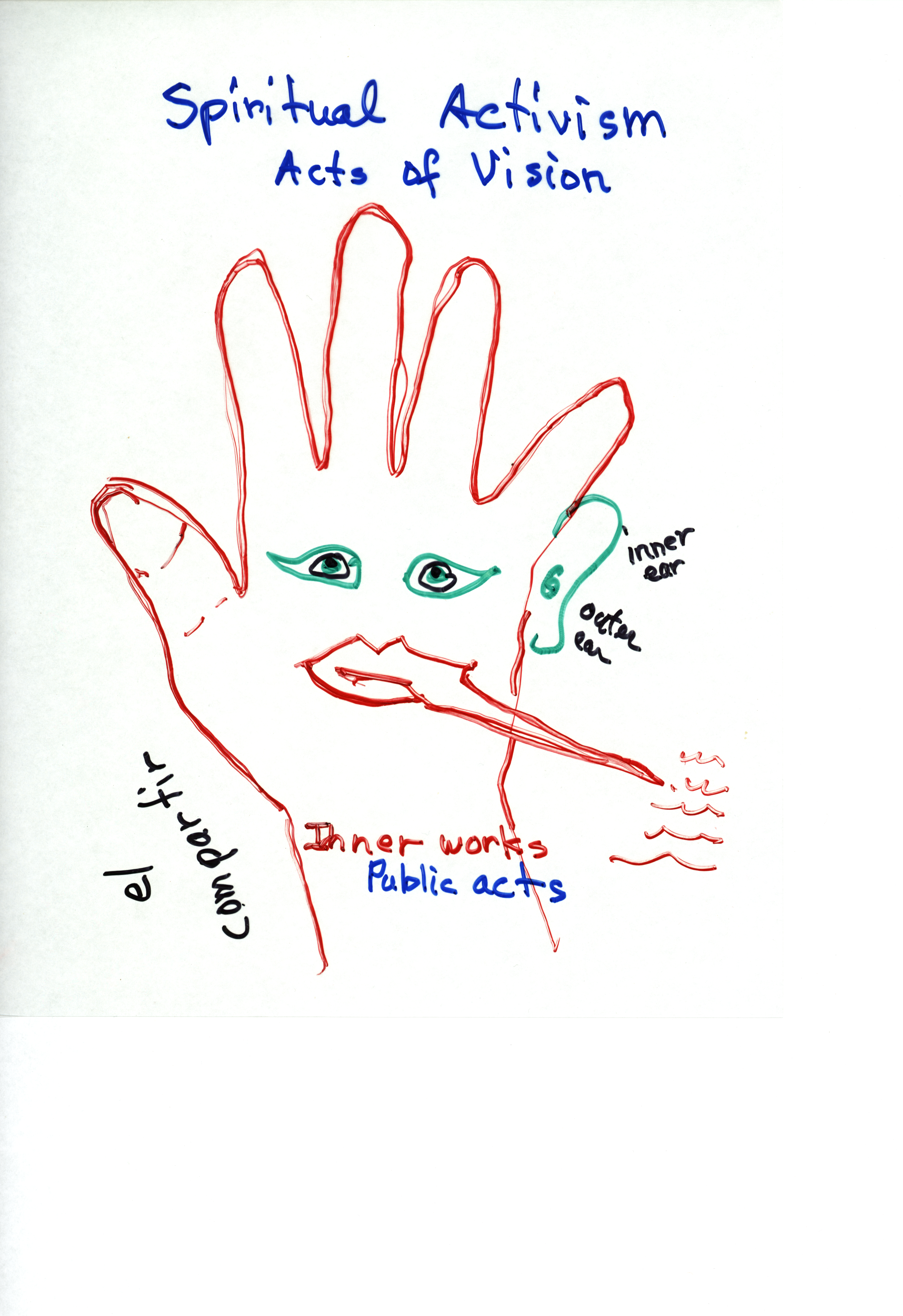They said mestizo and we legitimize ourselves from the legacy of coloniality,
Extractivist, misogynistic and proud of pigmentocracy
We appropriated space.
We were afraid in poverty.
They said mestizo and we embrace whiteness, we trace and walk routes of consumption, we build universities and appeal to development. They said mestizo and we devoured Anzaldúa, we do not want to be new mestizxs, we will penetrate the snake by reviewing what has been inherited, what has been acquired and what has been imposed.
We will abort our closeted Creole, we will enter our bowels, where the mestizo takes root and is part of our imagination as a national subject. Today we will spit out messtizo to place ourselves back in the center. We are going to swallow, to swallow under our own violent, excluding and phagocytizing logics. . .and yes, we will vomit.
They said mestizo and we put ourselves at the center of the territory, the body-territory, the narrative-territory, I-territory.
Our time is up.
This is not a dialogue, it is the end of political fiction as we know it, to say “not one negrx, not one less Yanomami”, we have to imagine NOT ONE MORE MESTIZO.
Embracing de-languaging policies, while betting on a radical ethic of disidentification from the State. Inventing sensitive ways of recognizing that the skin that runs all over our body is a first archive of sensations, memories, affections that give us goosebumps while helping us navigate unlikely ways of living. Embracing, therefore, the political f[r]ictions that we create from the collective and the group, even when these must be nuanced, hacked or redefined: the nation, miscegenation, borders, and also linguistic borders, gender, authority and all capitalist delirium.
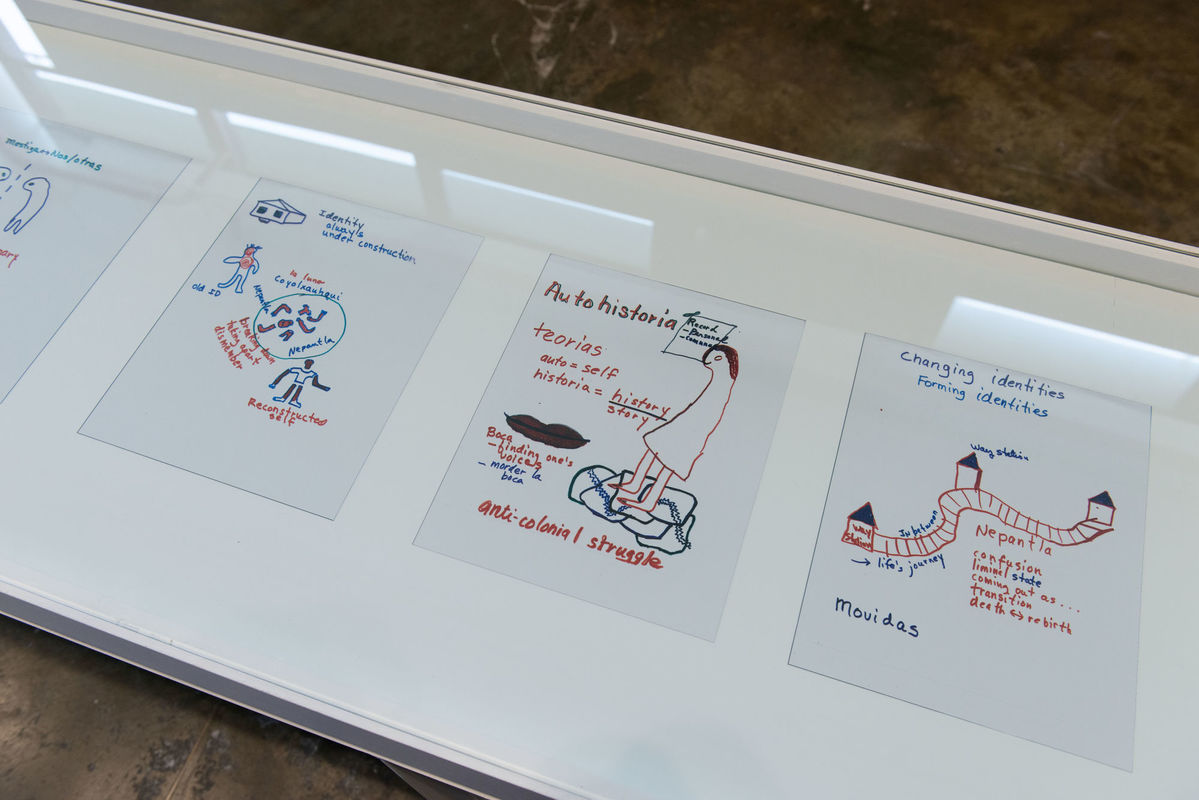
I like to think that Anzaldúa is present and meets Geni Núñez, val flores, Silvia Rivera Cusicanqui, Duen Sacchi, Mag de Santo, Karkará Tunga, Castiel Vitorino Brasileiro, Frida Cartas, Daniel Aguilar, Denise Ferreira da Silva, Chuquimamani Condori, María José Gamez, Emperatriz San Patricio, Doña Queta, Mikaela Drullard, Nêgo Bispo and Davi Kopenawa. I like to think that our reflections are never individual, they are always accompanied by ancestral polyphonies. Polyphonies that now emerge to liberate the act of writing, to navigate it without anxiety taking center stage. Despite the fact that, as Anzaldúa put it, writing induces anxiety, just as Conceição Evaristo tells us that experiences from writing make us bleed a little. Therefore, I propose a poetic unfolding of erratic writings.
Scriptural poetics that traverse the images stemming from the old tales of Aztlán, playfully breaking with the foundational schemas of this world configuration. Anzaldúa’s sensitive, surgical, and incisive work is, in fact, an epistemic revolution—the overflow of imagination between foundational narratives and shattered sensibilities. A sort of collective escape with backpacks on their shoulders across the desert. The stifled silence of those who must camouflage themselves from the border patrol. The poetics of shared solitude.
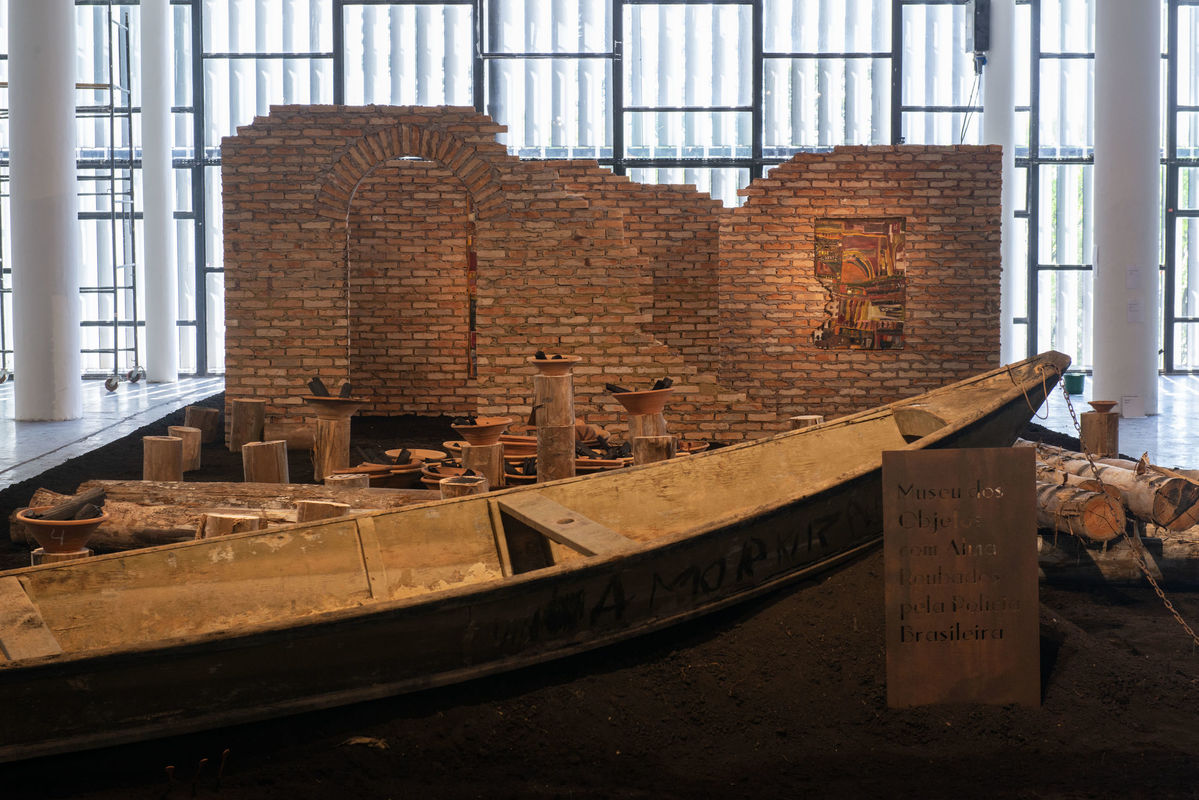
My grandmother Apolonia – like many of our grandmothers in Mexico and other territories where corn is the staple diet – would add lime to the corn to nixtamalizar it. The lime softens the corn kernel and loosens its husk, while interrupting any microbial processes. Adding lime facilitates its transformation, and yet; tortillas, pozole, gorditas, tamales and atole are still corn. But they also put lime on animal corpses to prevent them from decomposing, especially when small opossums or skunks are run over by the speed of capital in the middle of the road. My Nahua grandmothers from the south of Jalisco, and I, a more colourful ambiguity, stained but never mestizo.
Miscegenation as a deep wound, a wound inflicted by colonial whiteness and its homogenising efforts, a wound that will never heal, but can be treated; we must put lime on miscegenation, we must throw lime on Vasconcelos, on his cosmic race and any potential articulation of obliterating/amestizing/deindigenizing discourses¹. We must allow the lime to create a barrier that in turn enables us to interact without allowing ourselves to be pierced by romantic logics of colonial violence. On the contrary, we must allow ourselves to escape from any possibility upheld by the nomenclatures that the states, heirs of the modern-colonial project, push through all their institutions. Mestizo consciousness limits the escape, as it sets the ambush. An escape that involves not only the policies of writing but also the policies of vision, permeated by unbridled/fissured/ideated sensibilities outside the straight lines where not even the oneiric has a place because the latter often lacks logical proximities; therefore, articulating a policy of the invisible. Policies of the contaminated, of the ambiguous (never of the mestizo), policies of the border, of the delegitimized territory (never of Vasconcelos, never of the state), policies of our own genealogies, genealogies traversed by our shared, shared and intertwined experiences.
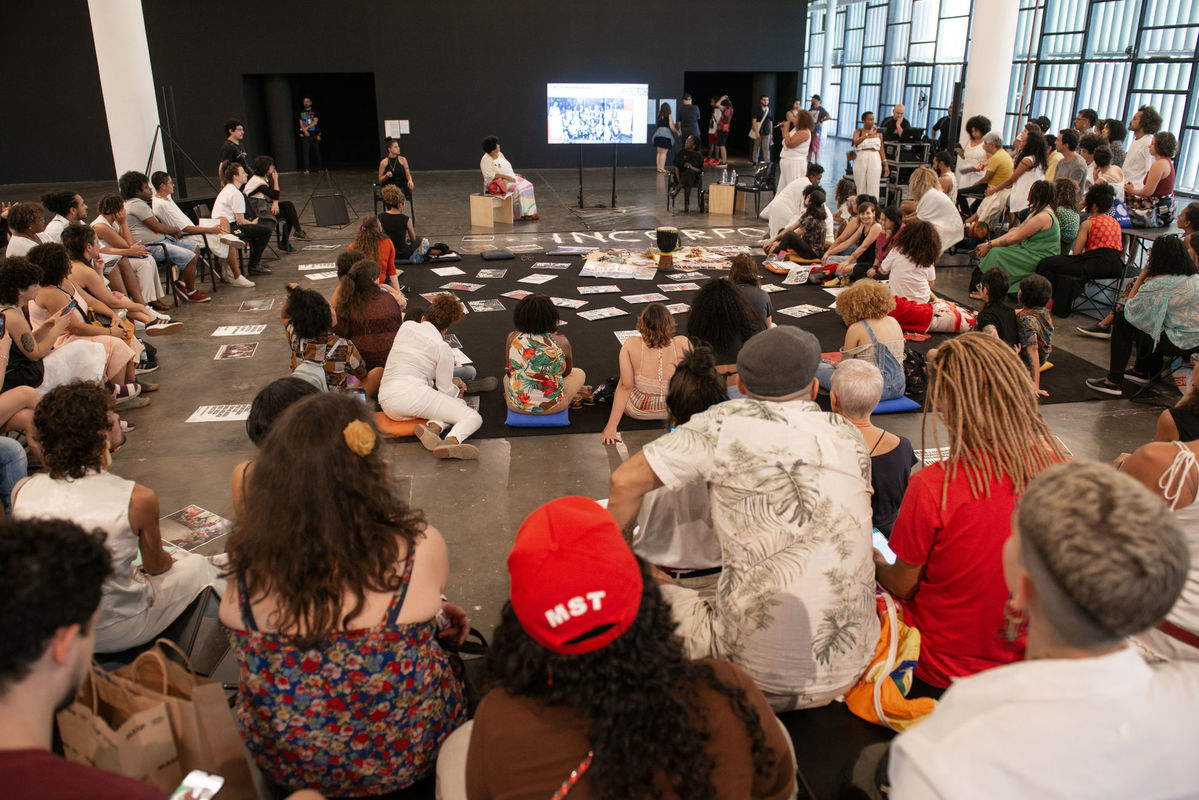
What would happen if we devised another identity policy that does not appeal to colonized territory as the sole possibility for reaffirmation and belonging? How do we appeal to ideations that cut through colonial complacency while allowing ourselves to break free from violent imaginaries that, at times, hinder transformation? What would happen if, in an attempt to cut through it all, we shatter the possibilities of capture around any imagination of exploitation, utilization, and discarding of experiences that accompany other radical ways of thinking about our colonial ambiguity? How can we turn our colonial ambiguity into a manifesto of the past, a technology of the future, and a ferry for the present? How do we come together to burn it all down while from the center we can watch it all blaze? What devices can we envision together for beyond destruction and its contemplation?
The ambush, as a military tactic of surprise attack, can allow us to rethink the ways in which we have been assuming Anzaldúa’s vibrant work. We must allow ourselves not to transit through her proposal from contemplation, but rather, allow ourselves to be violently shaken by its light subtlety. The ambush, like the nation, like the territory, can and must be expropriated from modern state projects that – as mentioned by the Ayuuk activist, linguist and researcher, Yásnaya Elena Aguilar Gil – have hijacked the notion of the Nation, producing and sustaining the desires of the state itself. But not only the nation, but also our imagination and our desire; the way we feel, say, think, dream, and so on. As long as the state exists (whether that of Mexico, Brazil or Guatemala, Chile, Colombia, Bolivia, Argentina, Uruguay, El Salvador, Suriname, Bolivia, Peru, Ecuador, Panama, Costa Rica, Honduras, Nicaragua, Cuba, Haiti, Venezuela, Colombia etc.) there will be oblivion², erasure and capture as forms of extreme government. The ambush would also be to abandon all possibility of articulation under colonial grammars, allowing us to develop our own signifiers from our guts, our lungs, our liver.
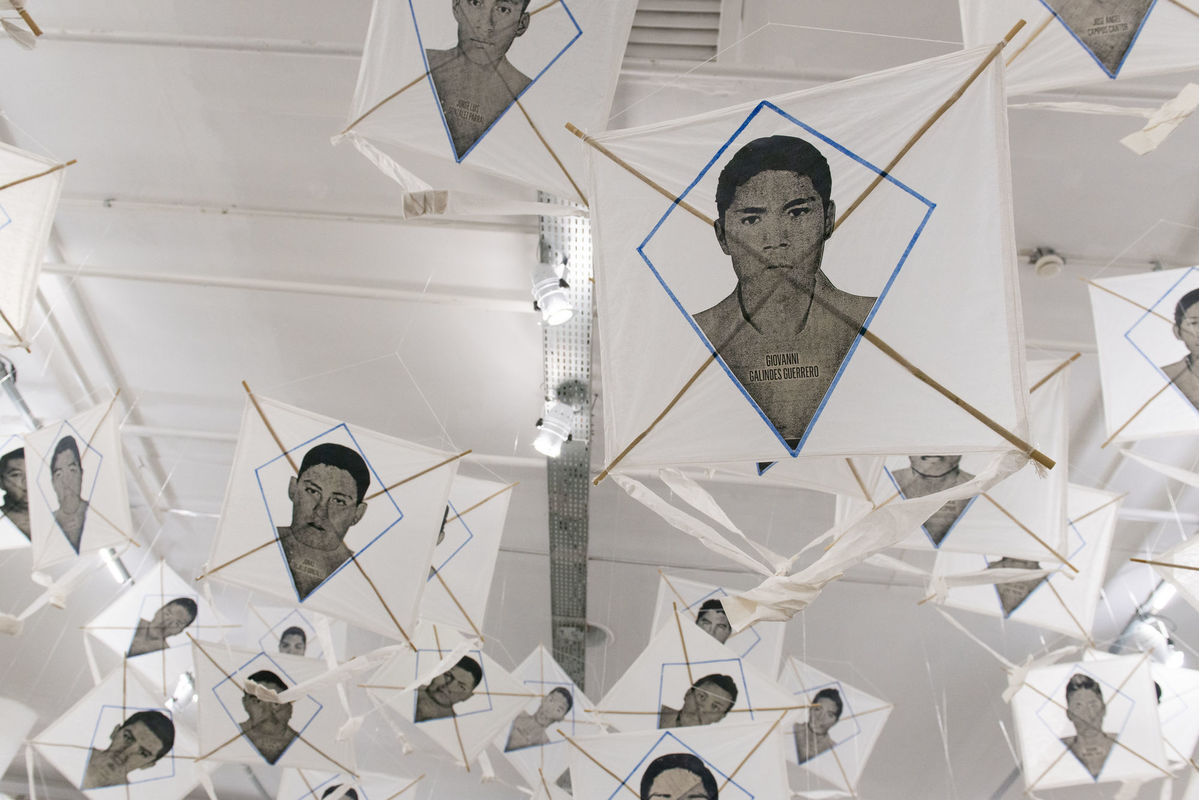
Doña Enriqueta, also known as Queta Contreras – a midwife, healer, and herbalist from the community of San Francisco Tutla in Oaxaca told me that sadness attacks the lungs; rage, anger and frustration compromise the liver and kidneys; fear settles in the chest and intestines. We feel images with our organs, contemplating an epistemology of the gut while betting on unbridled writings beyond comprehension. What Doña Queta asks of us is to pay attention to how our emotions affect our organicity, understanding that our emotions and affections are constructions that we carry out collectively, in affective communities. Therefore, understanding and tending to our emotions also means thinking about other ways of engaging in politics among us, suturing the wounds produced to be able to get here. Easing the undigested rages. Our guts are also nepantleras, frontiers. Let’s not make oblivion and invisibilization tools to conceive the world.
Doña Queta is 86 years old. Her grandmother is the great-granddaughter of a Zapotec woman healer. This is how, since the age of 11, she has been accompanying people afflicted by fear, sadness, and other ailments that have been worsening over the years. She told me that if so many people died during the COVID pandemic, it was because certain things had already been set in motion by the structural organization of the world. In other words, for many years, we have been confronted with fear, frustration, rage, and above all, loneliness and sadness. Lungs weaken when we are sad. The isolation, fear, and sadness during the pandemic weakened our bonds, preventing our hands, our arms, our smiles, and our heartbeats from sustaining each other “les unes a les otres”.
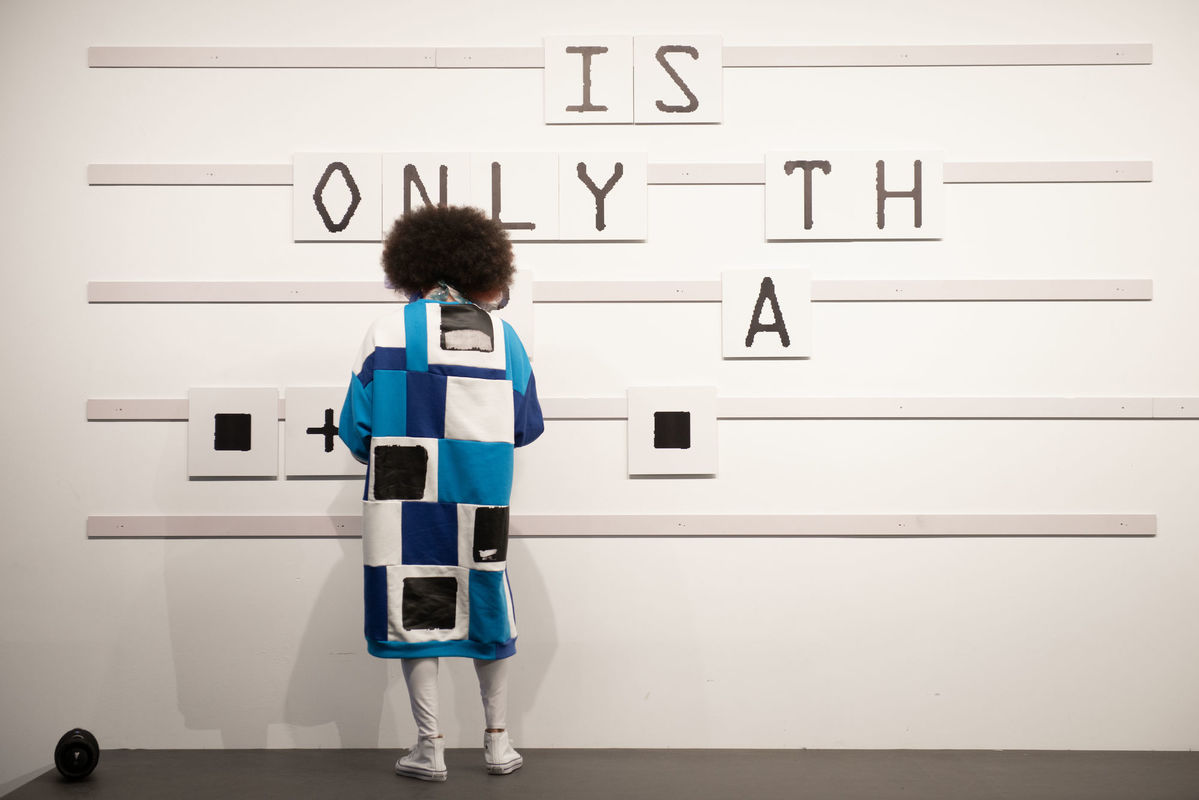
In this sense, and returning to the provocations mentioned above, the urgencies of other forms of policies are suffocating us, limiting our breathing, suppressing our capacity to feel, to speak, to express, to dream. The dream is also nepantlero and the imagination erratic. La chingada is going to get us, but la chingada, unlike what Octavio Paz might have said, is not La Malinche, it is not the mother who mourns the loss of her children, it is not the woman who betrays, it is in fact, the nation devoured by the creole logics of post-colonial states. La chingada is going to burden you and that can only happen because all the power that the state concentrates in its ideological apparatuses will make you disappear.
Come, let’s dream that we are together, let’s invite our neighbor to dream with us, to allow ourselves to inhabit the darkness even though it belongs to the visual regime and its commitment to sliminess. Let’s commit ourselves to the dream, let’s turn it into a field to exercise our imagination to think of acts of self-defense in a world whose ruins are trapping us day by day.
¹ I venture to elaborate this idea based on the contributions of Professor Fabian Villegas and the Ayuujk researcher, linguist and intellectual Yásnaya Elena Gil Aguilar. For Villegas, the mestizo (in our territories) is and has been, in addition, a metaphor of sophistication, development and modernity that is activated from the policies of whitening, as a construction of citizenship and model of subjectivity, translating into the forms of territorial planning, cultural policies, language policies, forms of racial stratification and even policies of affection and the regimes of desire (sic); while for Gil Aguilar, also an activist, mestizaje is nothing more than the deindigenization of populations for the purpose of the ideological and material support of the Nation-State itself. It is through these two positions that I propose to understand the lefts that tread Abya Yala from the logic of miscegenation.
² “[…] as long as there is Brazil, there will be oblivion[…]”, When the sun no longer shines here: the bankruptcy of blackness. Castiel Vitorino Brasileiro, 2022.
* The artworks that illustrate the text are a selection by danie valencia sepúlveda based on the choreographies of the impossible and their connections to the subjects discussed here.
About the author
danie valencia sepúlveda (1990, Ayutla, Jalisco, Mexico) is an errorist, educator, translator, cultural programmer, and independent researcher. They founded the Permanent Circle of Independent Studies, a counter-pedagogical research platform that, among other projects, develops the ongoing deformation course ‘Less Foucault, More Shakira.’ They currently serve as the editor-in-chief of the Terremoto magazine. Since 2020, they have been coordinating the Cosmic Race Laboratory, exploring whiteness technologies and racial archives in coloniality, along with sixteen other artists and researchers from their region. sepúlveda has undertaken research and artistic translation residencies at institutions such as the Centro de Arte Museo Reina Sofía in Madrid, Spain, CAPACETE in Rio de Janeiro, Translation House Looren in Hinwill, Switzerland, Matéria Abierta in CDMX, and the Salzburg Summer Academy, coordinated by Cosmin Costinas and Inti Guerrero. They currently lead a reading circle, research, and studies on the topic of ‘mental health: subjectivity, neoliberalism, and psychological suffering’ at the independent space ObreraCentro in Mexico City.
